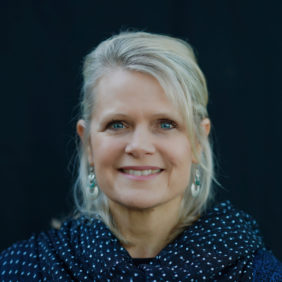As we round the final curve in November bringing us to the end of the journey that was 2021, I’ve found myself reflecting on what I thought would happen vs. what actually did happen this year and how I can adapt my leadership going forward. Like 2020, 2021 certainly wasn’t anything like the year I thought we would have—whether we’re talking about my experiences as a newly published author, my family life, Kadabra, or the wider world.
In many geographies, autumn is harvest time for crops like grapes and walnuts, both of which are produced in large quantities near where I live in Northern California. Nature reminds me this month to consider what learning and insights can be sown from any one or all of these domains.
Becoming a Book Author
In 2021 I achieved a significant personal goal and reached a new career milestone when I published my first book, Learn Lead Lift: How to Think, Act and Inspire Your Way to Greatness, in May. I’ve been regularly harvesting new learnings and insights throughout the process of bringing a book into the world over the past three years. As we approached the launch date in May, both the pace and the intensity of book-related activities and new learnings definitely accelerated.
I talked about some of my key learnings and insights recently with Becky Robinson, CEO of Weaving Influence and host of The Book Marketing Podcast. To listen in on our conversation, you can find my episode on the podcast here.
From a leadership perspective, publishing a book has reinforced the need for me to be even more intentional going forward about where I will choose to invest my time and energy. Focus will be a key theme for both Kadabra and for my leadership in 2022 and I plan to regularly check in with myself and my team about how we are doing and how we can get better at it.
From Mom to Matriarch
Shortly after Learn Lead Lift was released and summer began, some serious new issues and challenges emerged around members of my now small, close-knit extended family. Because we are so few in number and geographically dispersed, tackling those challenges has been complicated, to say the least.
As a result, I found myself this summer suddenly thrust into a new leadership role as the family matriarch. It’s not a role I ever aspired to or felt especially well-suited for. In our collective consciousness, we’ve come to associate “matriarch” with certain behaviors and skills, such as coordinating and hosting extended family gatherings, preparing meals for large groups of people, exercising both subtle and not-so-subtle forms of influence on our relatives in pursuit of socially desirable outcomes, and in some instances even standing in for the actual parents or acting as their reinforcements during a crisis.
I learned there is a big difference between being a mom to my own kids and being the chief caregiver to my extended family. Both roles provide the opportunity for me to show love to people I adore through tangible actions, not just sentiments. And doing both well is a new balancing act I am still learning my way through.
I am reflecting not just on what should I be doing as matriarch, but rather on who do I want to be as matriarch? What kind of leader does my family need me to be right now, and how can I embody that going forward without resentment or sacrificing my personal well-being and professional goals?
Kadabra 1.0 to 2.0
As I shared in a previous blog post last month Kadabra is embarking on a profound, albeit slow transformation from a consulting-led to a product-led business model. I am already learning and relearning important lessons about business and leadership just from initiating the process. Some of the insights I’ve harvested so far which map to various elements in our Learn Lead Lift Framework™, include:
-
- Inspiring and Including: Even when your Mission or Purpose (why you exist) is unchanged, changing your Vision (how you will deliver on that purpose) may mean that the team which got you here won’t get you there. As the team leader, I can continue to include and inspire them as part of the transformation even as team membership changes.
- Emotional Intelligence: Engaging support from others as you process your emotions moving through the change curve is important, even when you are the one initiating and leading the change. I am working on getting the support system I will need in place so I can continue to be the best leader I can be going forward.
- Focus: Building a new product development roadmap to help guide what you will say “yes” to and what you will say “no” to is hard when you have a ton of different ideas. I am not only becoming more focused as a leader through this process, I am also practicing what I teach about Systems Thinking and applying The 3T Model to support data-driven decision making alongside my intuition.
A Five-Year Pandemic
A year ago, in September 2020 and about six months into the COVID-19 pandemic, I made a prediction that it would be at least two years—December 2022—before any lasting sense of “normalcy” in our day to day life activities and businesses would return.
This was one prediction I was fervently hoping would be wrong, and that with the introduction of vaccines several months later, that there was a real possibility we could accelerate our return to semi-normalcy.
Due in large part to low vaccination rates in many areas in the U.S., a lack of global access to them in many others, extreme weather events, worker shortages, supply chain disruptions, and a toxic political climate that makes collaborative problem solving around any of these issues extremely difficult, my latest prediction is that globally we are actually in for a five-year journey with the COVID-19 pandemic instead of two-year one. We are experiencing VUCA dynamics on steroids. I hope I am proven to be thoroughly wrong about this and it turns out to be far less than five years.
Adapting to a five-year pandemic outlook means I’m making different decisions today as a CEO and business owner than I might have made if I still thought we were in for just a two-month or two-year stretch. I’m making different bets.
Final Thoughts
In light of VUCA dynamics, you might be tempted to forgo making any plans for 2022, but that would be a mistake. Leaders still need to provide or facilitate vision and direction so that team members know their work matters and where to invest time and energy for best results.
The most important conversations to have with your team when it comes to harvesting leadership insights from 2021 and looking ahead to 2022 center around these two questions, “How did we show up with and for each other this year navigating VUCA?” and, “Who do we want to be with and for each other next year navigating VUCA?”
Want to spot strengths and weaknesses and turn uncertainty into possibility? Download our Taking Mindful Action Bundle and learn how to prepare for and work through discomfort.
We’d love to hear your insights on 2021 and how your leadership has changed as a result or what you are thinking about for 2022. Email us now at hello@wearekadabra.com.


 Heather Leavitt-Martinez (she/her/hers) – Senior Product Manager
Heather Leavitt-Martinez (she/her/hers) – Senior Product Manager Wendy Ryan (she/her/hers) – CEO
Wendy Ryan (she/her/hers) – CEO Shawn Bunger (she/her/hers) – Senior Consultant
Shawn Bunger (she/her/hers) – Senior Consultant Crystal Whiteaker (she/her/hers) – Senior Consultant
Crystal Whiteaker (she/her/hers) – Senior Consultant Gail Finger (she/her/hers) – Senior Consultant
Gail Finger (she/her/hers) – Senior Consultant Monica Silkwood (she/her/hers) – Director of Operations and Experience
Monica Silkwood (she/her/hers) – Director of Operations and Experience Johanna Lyman (she/her or they/them) Senior Consultant
Johanna Lyman (she/her or they/them) Senior Consultant Sherri Horan (she/her/hers) – Senior Consultant
Sherri Horan (she/her/hers) – Senior Consultant